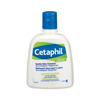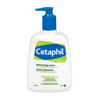Red Alert
If you go red in the face a lot - even when you’re not embarrassed - rosacea could be to blame. Along with giving you a crimson hue, the condition can upset your skin in a variety of ways, including making it burn and itch. There’s no cure, but certain techniques and treatments can help extinguish its red-hot symptoms. To get the best taming tricks and to learn more about rosacea, keep reading.
The look and feel of rosacea
Rosacea is a chronic vascular skin condition that primarily affects your face. It makes your blood vessels dilate, which causes more blood to flow to the area. As a result, you end up with the likes of redness, heat, burning, itching, flushing, broken blood vessels and pimples, according to Dr. Jaggi Rao, dermatology residency program director at the University of Alberta and medical director for Acne Clinics of Canada.
Your face may not be the only place rosacea occurs. Some 50 percent of sufferers deal with ocular rosacea, which causes eyelids to swell and makes eyes bloodshot or watery and feel irritated, according to the National Rosacea Society. And very occasionally, says Rao, rosacea can show up on your ears, back, scalp and chest.
If you’re experiencing rosacea-like symptoms, don’t jump to the conclusion that you have the condition. It’s important to get a diagnosis from a medical expert. “There are many mimickers of rosacea, such as lupus and infections, that may look the same but could be more serious,” he says. “There are also many mimickers that are not serious, but do not respond to the same therapies as rosacea.” In fact, it’s worth your while to seek medication attention as soon as signs appear, as undiagnosed and untreated rosacea can lead to permanent redness of your skin (so you have a ruddy look all the time), pimples, pustules, nodules and a bulbous nose (called rhinophyma).
Red-hot triggers
While the condition is chronic - meaning it’s there for the long haul - symptoms aren’t always around. Periods of remission are interspersed with flare-ups. “Flares are characterized by increased redness, heat, burning and itching,” Rao explains. “They last longer than the duration of exposure to the trigger, sometimes in the order of days. The more frequent the exposure, the longer the symptoms will last (and blood vessels may become permanently dilated).” According to Rao, common triggers include sunlight, spicy or hot food, alcohol, caffeine, some prescription medications and experiencing extreme emotions. Triggers are personal and not the same for all sufferers, so it’s important that you determine, with your dermatologist, what upsets your rosacea.
Who’s at risk
The jury’s still out on the exact causes rosacea. There seems to be a genetic predisposition to it, and those with fair skin and people who easily flush may be most at risk, says the National Rosacea Society. Onset typically occurs in adult years, usually sometime after age 20. Meanwhile, women get it more frequently than men, but men tend to experience more severe symptoms (no one knows why this is). “Men get more pimples and flushing, greater enlargement of facial vessels and rhinophyma (bumpy, bulbous nose)” says Rao.
Rosacea relief
There’s no cure for rosacea, but there are ways to manage it and help prevent it from getting worse. First, it’s essential that you avoid the triggers that cause flare-ups. Medication, prescribed by your dermatologist, may also be necessary to help reduce inflammation, if you have any. Lasers can be effective in treating dilated blood vessels, persistent redness and flushing, says the National Rosacea Society. Meanwhile, handling your skin with proper TLC is important. Using disagreeable products or rough techniques can cause flare-ups, while appropriate care can improve the look of your skin and soothe it. Here’s what to do:


Apply sunscreen. Sunlight is a top trigger for rosacea sufferers, so it’s crucial to wear sunscreen - with at least SPF 15 and UVA/ UVB protection - every day, year-round. Try a fragrance-free one, such as Ombrelle SPF Lotion 30. If chemical sunscreens don’t agree with your skin, consider a sunscreen with titanium dioxide or zinc (natural sunblocks), suggests the National Rosacea Society.


